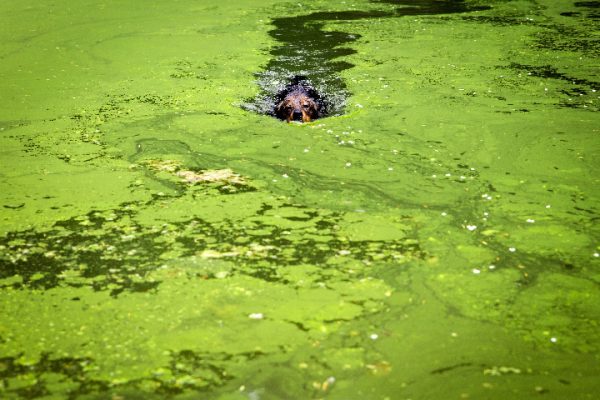Algaecides are essential chemicals used in pool maintenance to prevent and treat algae growth, helping to keep pool water clean and clear. However, using too much algaecide can lead to unintended consequences and potential problems for pool owners. In this article, we’ll explore the causes of excess algaecide in your pool, the signs to look out for, and actionable solutions to address this issue and restore optimal water balance.
Understanding Algaecide in Pool Water:
Algaecides are chemical compounds specifically formulated to inhibit the growth of algae in pool water. They work by disrupting algae cell walls or inhibiting photosynthesis, preventing algae from thriving and multiplying. While algaecides are effective at controlling algae, using them in excess can lead to imbalanced water chemistry and potential side effects.
Causes of Excess Algaecide:
- Overdosing: Adding too much algaecide to your pool water, either intentionally or inadvertently, can lead to excess levels of the chemical. Overdosing may occur when following incorrect dosage instructions, using a concentrated algaecide product, or adding algaecide too frequently.
- Cumulative Buildup: Algaecide residues can accumulate in pool water over time, especially if algaecide treatments are applied frequently or if a residual algaecide product is used. This buildup can result in excess algaecide levels and potential water chemistry imbalances.
Signs of Excess Algaecide:
- Foaming: Excess algaecide in pool water can cause foaming, especially when combined with other pool chemicals or agitation from pool equipment. Foam may accumulate on the pool surface or persist when water is agitated, indicating a potential imbalance.
- Cloudy Water: Cloudiness or turbidity in pool water can result from excess algaecide levels, as well as other water chemistry imbalances. Cloudiness may indicate a buildup of algaecide residues or reaction byproducts, impairing water clarity.
- Skin and Eye Irritation: High concentrations of algaecide in pool water can cause skin and eye irritation in swimmers. Symptoms may include redness, itching, or discomfort after swimming, indicating a potential imbalance or chemical overdose.
Solutions for Addressing Excess Algaecide:
- Dilute the Pool Water: If you suspect excess algaecide levels in your pool, diluting the water by partially draining and refilling the pool can help reduce algaecide concentrations. Monitor water chemistry and adjust chemical levels as needed to restore balance.
- Enhance Filtration and Circulation: Increasing filtration and circulation in your pool can help remove excess algaecide residues and restore water clarity. Run the pool pump and filter system for longer periods, and clean or backwash the filter as needed to improve efficiency.
- Test and Adjust Water Chemistry: Regularly test pool water chemistry using a reliable pool water test kit and adjust chemical levels as needed to maintain balance. Pay close attention to algaecide levels, as well as pH, chlorine, and alkalinity, and take corrective action to restore optimal water balance.
- Consult a Pool Professional: If you’re unsure how to address excess algaecide in your pool or if the problem persists despite your efforts, consider consulting with a pool professional or water chemistry expert. They can assess the situation, provide recommendations for corrective action, and help restore water quality.
Conclusion:
While algaecides are valuable tools for preventing and treating algae growth in pools, using too much algaecide can lead to unintended consequences and potential water chemistry imbalances. By understanding the causes and signs of excess algaecide and taking proactive measures to address the issue, pool owners can restore optimal water balance and maintain a clean and healthy swimming environment. Regular monitoring of water chemistry, proper dosage of algaecide, and prompt corrective action are essential for ensuring the effective and safe use of algaecides in pool maintenance.
